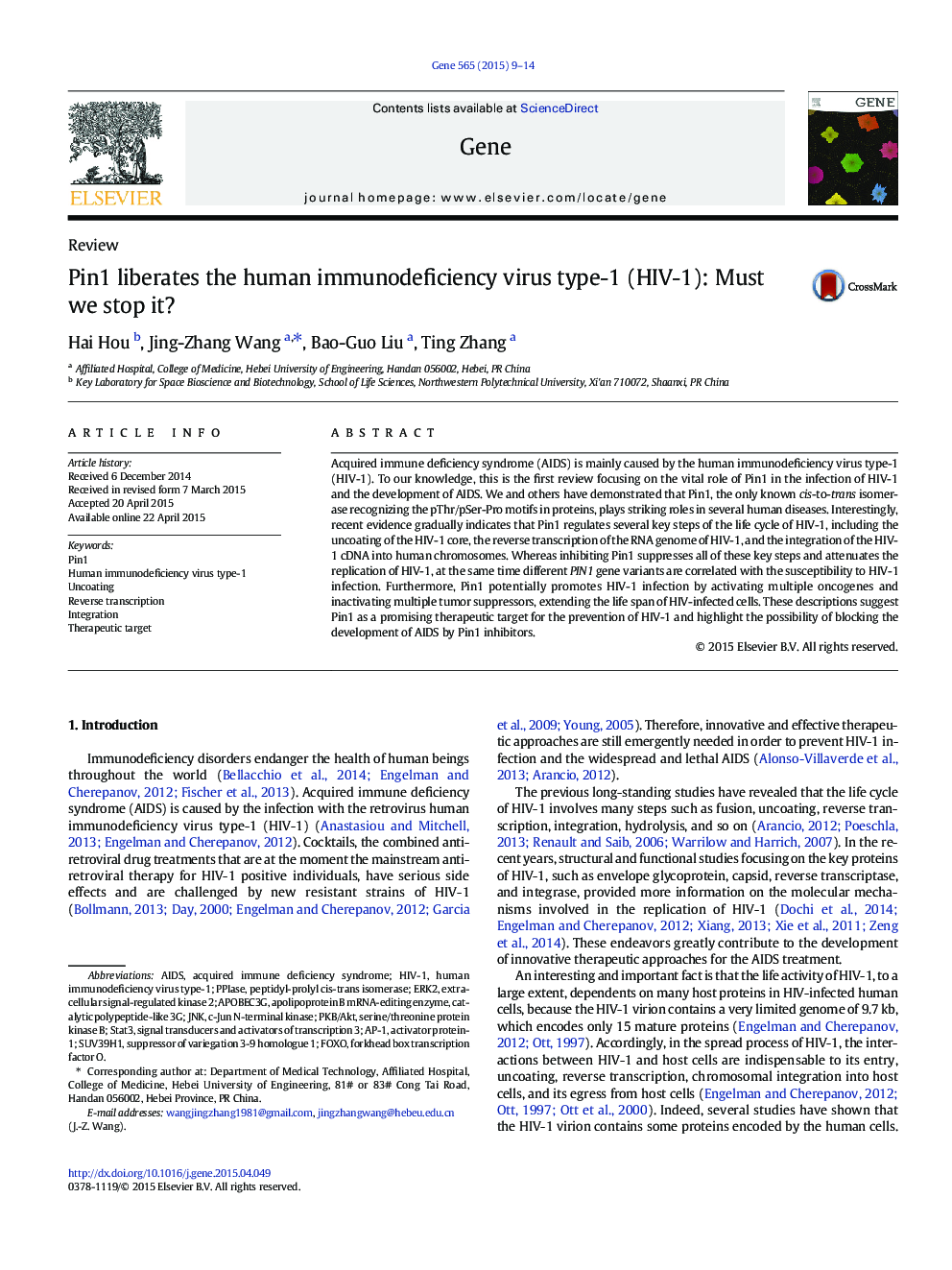| Article ID | Journal | Published Year | Pages | File Type |
|---|---|---|---|---|
| 2815686 | Gene | 2015 | 6 Pages |
•Pin1 initiates the disassociation of capsid and the uncoating of the HIV-1 core.•Pin1 enhances the reverse transcription efficiency of the RNA genome of HIV-1.•Pin1 facilitates the integration of the HIV-1 cDNA into human chromosomes.•Pin1 extends the life span of HIV-infected cells via multiple oncogenesis pathways.•Pin1 is a promising therapeutic target for the prevention of HIV-1 and AIDS.
Acquired immune deficiency syndrome (AIDS) is mainly caused by the human immunodeficiency virus type-1 (HIV-1). To our knowledge, this is the first review focusing on the vital role of Pin1 in the infection of HIV-1 and the development of AIDS. We and others have demonstrated that Pin1, the only known cis-to-trans isomerase recognizing the pThr/pSer-Pro motifs in proteins, plays striking roles in several human diseases. Interestingly, recent evidence gradually indicates that Pin1 regulates several key steps of the life cycle of HIV-1, including the uncoating of the HIV-1 core, the reverse transcription of the RNA genome of HIV-1, and the integration of the HIV-1 cDNA into human chromosomes. Whereas inhibiting Pin1 suppresses all of these key steps and attenuates the replication of HIV-1, at the same time different PIN1 gene variants are correlated with the susceptibility to HIV-1 infection. Furthermore, Pin1 potentially promotes HIV-1 infection by activating multiple oncogenes and inactivating multiple tumor suppressors, extending the life span of HIV-infected cells. These descriptions suggest Pin1 as a promising therapeutic target for the prevention of HIV-1 and highlight the possibility of blocking the development of AIDS by Pin1 inhibitors.
